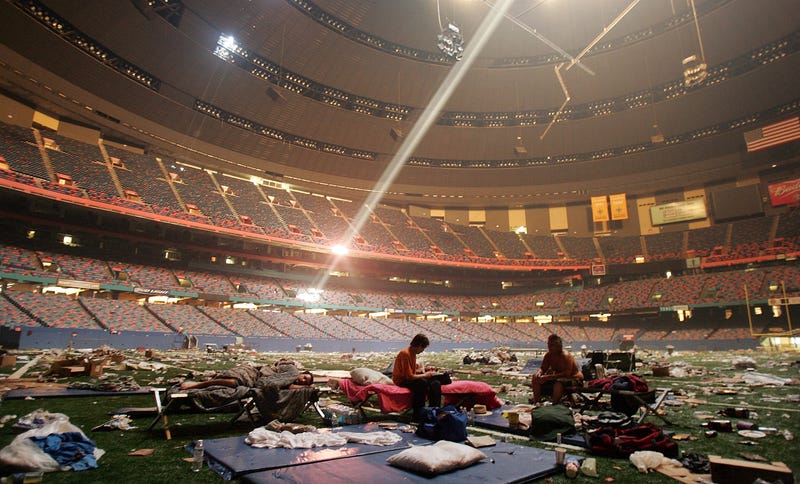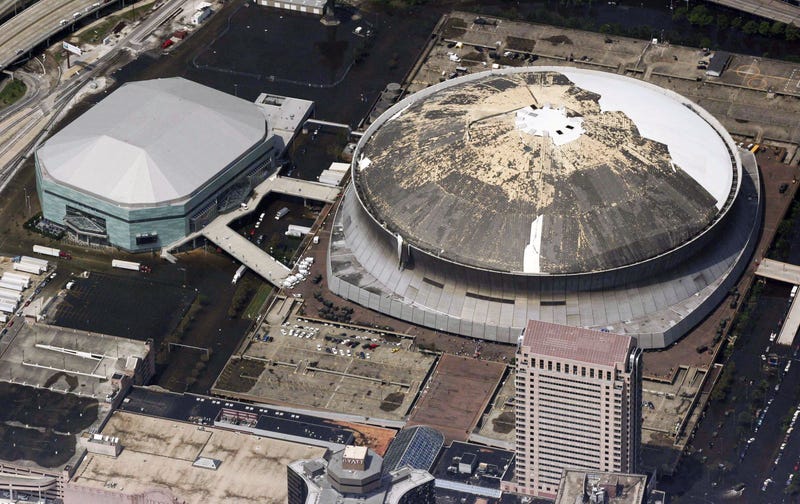
The tattered roof of the Louisiana Superdome after Hurricane Katrina, and the images from inside the stadium showing shafts of light penetrating the damage, and the darkness as the building sat without electricity, were seen around the world, and it showed just how severe the storm was, and how challenging rebuilding the city of New Orleans would be.

In the years leading up to Hurricane Katrina, the state and the Saints had been locked in negotiations over a new long term agreement to keep the team from moving to another city. Would that mean a newly renovated Superdome, or a new stadium entirely?
"We had been in discussions with the Saints prior to Katrina about possibly improving the Superdome," said stadium executive Doug Thornton. He said they even completed a master plan on Superdome improvements the year before the storm hit.
"Once Katrina impacted us, we felt it was not only time to repair the Superdome but to improve it as well," said Thornton.
Since FEMA by law could only pay to repair, not improve, the stadium, the Superdome commission's then-chairman, Tim Coulon, says they needed to secure multiple sources of money.

"FEMA provided 115 million, the Dome, or through the LSED, the Superdome commission, we were able to finance 41 million dollars," Coulon said. "The NFL advisory committee, through the ownership, provided 15 million and the state provided 13 million."
Coulon says that was the beginning of what let to the Saints agreeing to stay and the state agreeing to more upgrades, leading to the Superdome we have today.
"That sent a very positive message about we were serious about keeping them here, about rebuilding the Dome, and wanting the Saints here for the long term," said Coulon.

